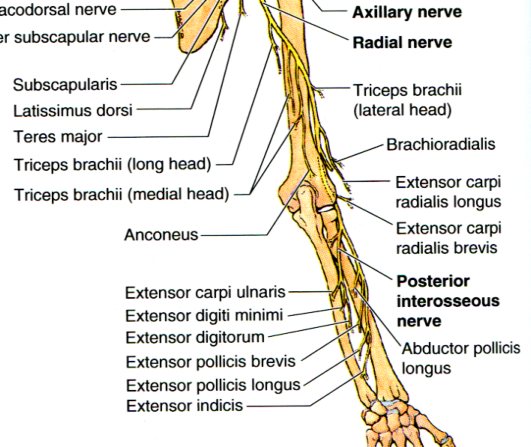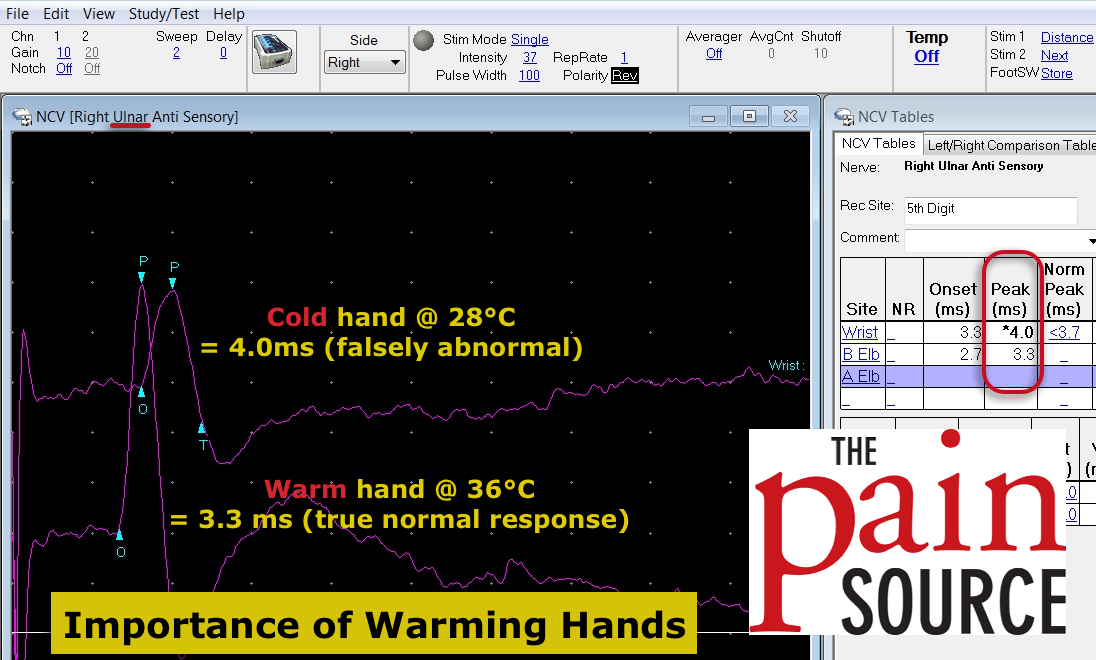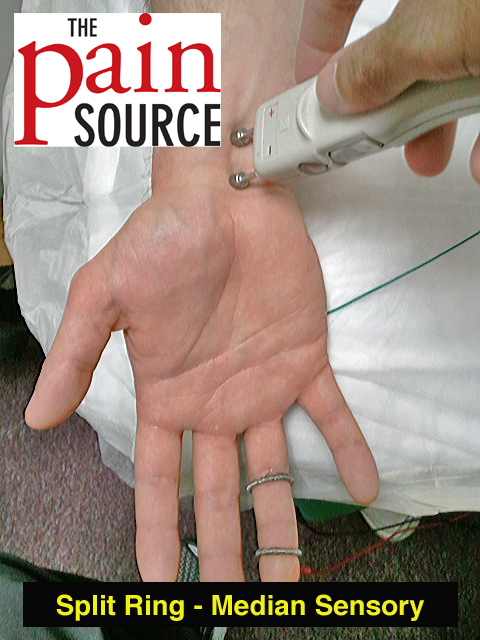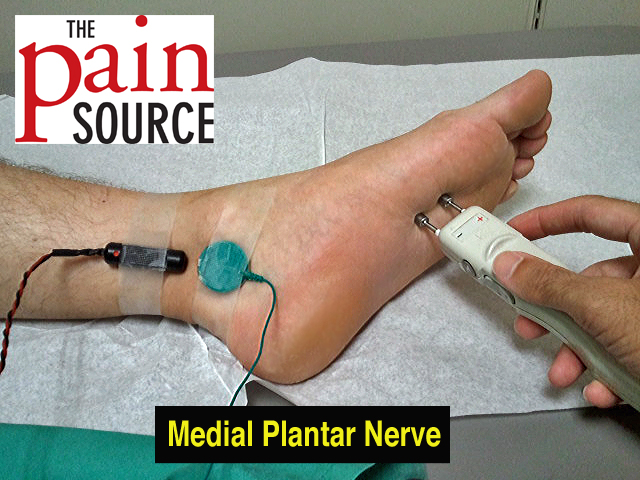By Chris Faubel, MD —
The posterior interosseous nerve (PIN) is one of those nerves learned best by knowing the exceptions.
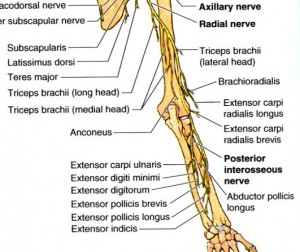
In this case, the PIN innervates all the muscles on the dorsal side of the forearm, EXCEPT the brachioradialis, extensor carpi radialis longus (ECRL), and anconeus.
- It may help to remember these 3 exceptions by remembering they are the only muscles in the dorsal forearm that cross the elbow joint
- So that means, ALL dorsal forearm muscles that do NOT cross the elbow joint are innervated by the deep radial nerve/PIN (see below)
When does the radial nerve become the PIN?
- In the distal, lateral arm, the radial nerve splits into a superficial and deep radial nerve
- The superficial radial nerve helps to provide sensation to the dorsal hand
- The deep radial nerve pierces the supinator muscle, and emerges on the other side, renamed the posterior interosseus nerve.
Note: The most distal muscle innervated by PIN (and therefore the radial nerve) is the extensor indicis proprius
List of muscles innervated by the Deep Radial Nerve
- Extensor carpi radialis brevis
- Supinator
Posterior Interosseous Nerve (PIN)
- Extensor carpi ulnaris
- Extensor digitorum
- Extensor digiti minimi
- Abductor pollicis longus
- Extensor pollicis longus
- Extensor pollicis brevis
- Extensor indicis proprius
Note: many people consider the deep radial nerve to be the same as the PIN. In that case, the extensor carpi radialis brevis is the first PIN-innervate muscle, and then all others listed above.

